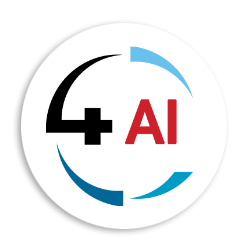Blog
Turning Microsoft Fabric Into a Revenue Engine: How to Productize and Commercialize Fabric-Based Solutions

Microsoft Fabric isn’t just another data platform. It’s a full-stack, cloud-native, all-in-one analytics solution that integrates data engineering, data science, real-time analytics, and business intelligence under one roof. For Microsoft resellers, ISVs, and service providers, this is more than a product — it’s a platform to build platforms.
So how do you go from deploying Fabric to building a scalable, repeatable business around it?
Here’s how.
Step 1: Think Beyond Deployment — Think Product
The key to productizing Microsoft Fabric isn’t just mastering the tech stack. It’s packaging Fabric into something customers can buy — a defined, outcome-oriented solution with clear value, pricing, and support.
This means:
- Defining a target audience (industry, role, use case)
- Designing repeatable architecture and data models
- Creating pre-built templates, connectors, and dashboards
- Offering tiered pricing and subscription models
- Wrapping it all in clear branding and documentation
Fabric can power this engine. But the engine has to be yours.
Step 2: Choose Your Play – Platform or Industry Solution?
You’ve got two big routes:
Option A: Fabric as a Platform
Create a branded analytics platform powered by Microsoft Fabric. Think of it as your own “mini-Fabric,” with your IP layered on top.
Ideal for:
- ISVs building a vertical SaaS platform
- MSPs targeting mid-market analytics maturity
- Partners with reusable components across clients
Example:
A managed analytics platform for mid-sized retailers that offers SKU-level profitability analysis, customer churn prediction, and vendor scorecards — all prebuilt in Fabric and surfaced through Power BI.
Option B: Industry-Specific Solutions
Go deep, not wide. Build a solution for a specific industry, problem, or compliance regime, with Fabric under the hood.
Ideal for:
- Service providers operating in specific and focused verticals (healthcare, finance, logistics, etc.)
- Resellers aiming to expand from services to IP
- Anyone wanting to differentiate in a crowded space
Example:
A Fabric-powered clinical data analytics solution for healthcare providers that blends EHR data, wearables, and lab reports to power population health dashboards.
Step 3: Build IP on Top of Fabric
Productization depends on your ability to add value beyond the platform. Fabric gives you amazing capabilities like:
- OneLake: a unified data lake that eliminates duplication
- Data Factory & Pipelines: for building ETL workflows
- Synapse Data Engineering: for Spark-based processing
- Power BI: for best-in-class visualization
But customers don’t pay for features. They pay for outcomes and simplicity.
So build:
- Pre-built connectors (to CRMs, ERPs, IoT sources)
- Industry-specific data models (e.g., HL7 FHIR, retail POS schema)
- Dashboards and KPIs tailored to vertical-specific metrics
- AI-infused modules using built-in Fabric ML features
And wrap it all with:
- A unified front-end or portal
- Role-based access
- Alerting, reporting, and automation
- Optional managed services
Step 4: Establish a Commercial Model
You're not just delivering services anymore. You're selling a productized offering.
This means you need to move from billable hours to packaged pricing. Key models to consider:
- Tiered SaaS Pricing: Basic / Pro / Enterprise analytics platform access
- Per Dataset or Per Site Fees: Common in healthcare or retail
- White-Label Licensing: For other partners to resell your solution
- Platform + Services Bundles: Fixed-fee implementation + monthly managed services
Important: Align your pricing with value delivered, not just resource effort. Consider usage-based models if customers scale rapidly.
Step 5: Market the Outcome, Not the Stack
Here’s where many partners go wrong: they sell “Microsoft Fabric implementations.” Nobody buys a tech stack — they buy solutions to their problems.
Your marketing needs to tell a story:
- Who is this for?
- What problem does it solve?
- What business outcome will it deliver?
- How fast can they get there?
Avoid buzzwords. Be specific.
Instead of: “Leverage end-to-end analytics with Microsoft Fabric and AI.”
Say: “Reduce supply chain costs by 18% in 90 days with automated SKU analytics for manufacturing.”
Own your vertical. Speak the customer’s language. Let Microsoft handle the stack messaging — you handle the use case.
Step 6: Scale with Repeatability and Governance
To move from custom projects to a scalable product, you need repeatability.
- Standardize deployment via deployment pipelines and templates
- Use Git integration for version control of workspaces and notebooks
- Document everything: data models, transformations, KPIs
- Automate provisioning, onboarding, and monitoring
Also build a support framework:
- Tier 1 support (front-line help)
- Tier 2 (technical issues)
- Tier 3 (engineering escalations)
- Release notes, product roadmap, community
Step 7: Build with Microsoft, Not Just On It
Microsoft wants partners to succeed with Fabric — especially those creating industry IP. Use every channel available:
- Co-sell via Microsoft’s marketplace
- Partner Center GTM resources
- ISV Success Program
- Industry Clouds (e.g., Healthcare, Retail, Financial Services)
- Fabric-focused Solution Accelerator templates
- Direct engagement with Microsoft Partner Managers
Microsoft Fabric isn’t a solo journey. It’s a highway — and Microsoft is encouraging partners to build the vehicles that drive revenue on it.
Real-World Scenarios
Here are a few productization examples to spark ideas:
Retail Insights Platform
A subscription-based analytics suite for retailers, with real-time sales dashboards, supply chain alerts, and promotion ROI — powered by Fabric and served via a branded portal.
Healthcare Compliance & BI Toolkit
A templated data integration and compliance platform for clinics and hospitals to meet reporting requirements (e.g., CMS, HIPAA) and track patient outcomes.
Logistics Optimization Engine
A Fabric-based platform combining IoT telemetry, route data, and maintenance schedules to reduce delivery delays and downtime for fleet operators.
Final Thoughts
Fabric is the foundation. The opportunity lies in what you build on top of it. Microsoft is investing heavily in this space, and the ecosystem is wide open for smart, industry-savvy partners to turn Fabric into commercial IP.
If you’re a reseller, MSP, or ISV, don’t just implement Fabric. Productize it. Wrap it. Brand it. Sell it. Scale it.
This isn’t just the future of data platforms — it’s your future business model. Reach out to us at This email address is being protected from spambots. You need JavaScript enabled to view it. to discuss and map out your productization journey!


